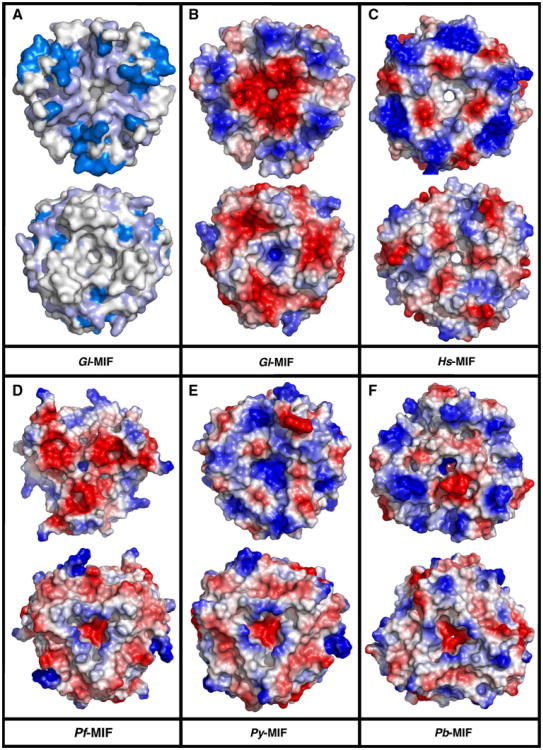Fig. 4.
ClustalW2 summary and comparison of the electrostatic potential at the solvent-accessible surface. Structures are aligned looking through the channel formed by the trimer with both faces shown. In each pair the top structure is the face with the N- and C-termini pointing towards the viewer. a Summary of the ClustalW2 results from Fig. 3a with the invariant residues colored dark blue and the invariant and conserved residues colored light blue. Electrostatic pontential at the solvent-accessible surface for b Gl-MIF (3T5S) c Hs-MIF (1CGQ) d Pf-MIF (2WKF) e Py-MIF (3GAD), and f Pb-MIF (2WKB). Note that electron density is absent at the C-terminus for Gl-MIF (A102-F114) Pf-MIF (N107-G116), Py-MIF (E117, 2 out of 3 chains), and Pb-MIF (F103-S106, 2 out of 3 chains). The missing C-terminal electron density for Py-MIF and Pb-MIF is responsible for the apparent absence of three-fold symmetry in the electrostatic potential pattern in the top face of these two structures

